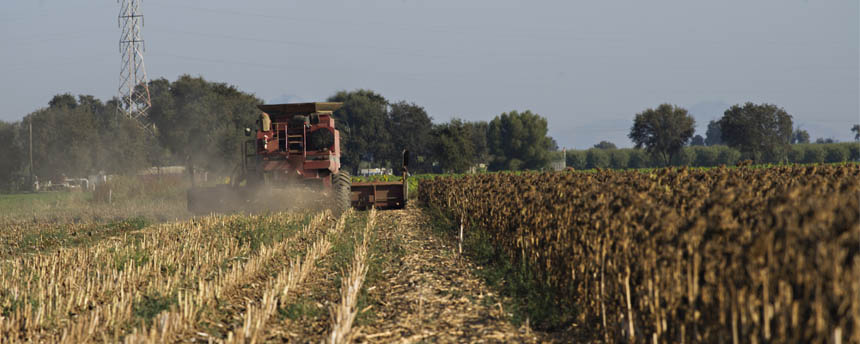On the one hand, human and veterinary doctors pay attention to the innermost workings of the body. On the other hand, earth scientists study what’s happening all around us: the air, water, land and even space. How do the different perspectives dovetail?
Doctors consider research from earth sciences to understand why some health issues start or worsen. Atmospheric sciences and climate studies are especially helpful because they tell us about changes in the air that we all breathe to survive. At local and global scales, the air temperature is rising and the air quality is declining.
Science Identifies Environmental Shifts
Measuring Air Quality From an Airplane
Scientists with the UC Davis College of Agriculture and Environmental Sciences measure changes in air quality from agriculture and development, even using an airplane to measure methane released by a recent leak in California.
- Warmer, drier conditions on land have led to forest fires and dust storms that put contaminants, specifically particulate matter, into the air.
- Warmer conditions spur plants to flower earlier and for longer durations, releasing pollen into the air for more of each year.
- Warmer conditions allow ozone to hang around in the atmosphere longer throughout the year.
- Insects and animals that can’t adapt quickly enough to hotter habitats are driven to migrate, bringing to new places spores on their bodies and viruses or bacteria in their bloodstreams.
- Consider, too, that humans generate particulate matter from burning oil and coal and release other greenhouse gases that trap heat in the atmosphere from agriculture and fuel leaks.
Our Air, Our Health
Trina Wood, a regular One Health Blog contributor from the UC Davis School of Veterinary Medicine, offers the following overview of how veterinarians and doctors use information about ozone, allergens and particulate matter to uncover and mitigate negative health impacts.
Veterinary research helped the U.S. Environmental Protection Agency set the nation’s first air quality standards after passage of the Clean Air Act in 1970. Since then, the UC Davis comparative respiratory biology group has continued to provide essential scientific data to refine those standards. Recent discoveries show that adverse health effects occur in healthy lungs even when they are exposed to levels of pollution at today's established "safe" limits, supporting a proposed update to existing air quality standards.
4 Health Impacts From Air Pollutants
1. Ozone causes childhood asthma
Members of the comparative respiratory biology team showed for the first time that occasional exposure to ozone can change how young lungs develop and how such damage can lead to the onset of asthma.
2. Common allergens cause allergic asthma
Researchers proved that exposure to a common human allergen, the house dust mite, can sensitize young lungs and induce allergic asthma, which can be exacerbated by ozone exposure. Since human lungs continue to develop after birth, this discovery sheds new light on how such sensitization begins.
3. Early immune responses are associated with childhood asthma
Researchers are leading integrated studies of the immune response in lungs and airways. These scientists are investigating how certain cells in the immune system of the immature lung develop under the stresses associated with air pollution to cause asthma, upper respiratory allergies and even skin allergies.
4. Agricultural practices produce "ultrafine" particles that affect lungs in unique ways

For more than two decades, experts throughout UC Davis have investigated the biology behind how toxic air pollutants are in the unique environment of California’s San Joaquin Valley, often called the nation’s breadbasket but also a region known for polluted urban air and one of the highest childhood asthma rates. This team’s scientific progress led to the selection of UC Davis in 2005 as the home of one of only five EPA air quality research centers. Investigators have developed new ways to determine that specific ultrafine particles, such as road dust, diesel soot, fly ash and wood smoke, result in different degrees and kinds of toxicity in the lungs. These findings can assist regulators in controlling the most dangerous sources of particulate pollution.
One surprising finding from BBQing on a backyard grill: The source of particulate matter, not the size, may be influential in health effects. Smoke from charcoal briquettes was more problematic than investigators anticipated.
Related:
- 10 powerful climate change insights for improving the planet from the UC Davis John Muir Center for the Environment.
Amy Whitcomb is an editor on the web team in Strategic Communications.